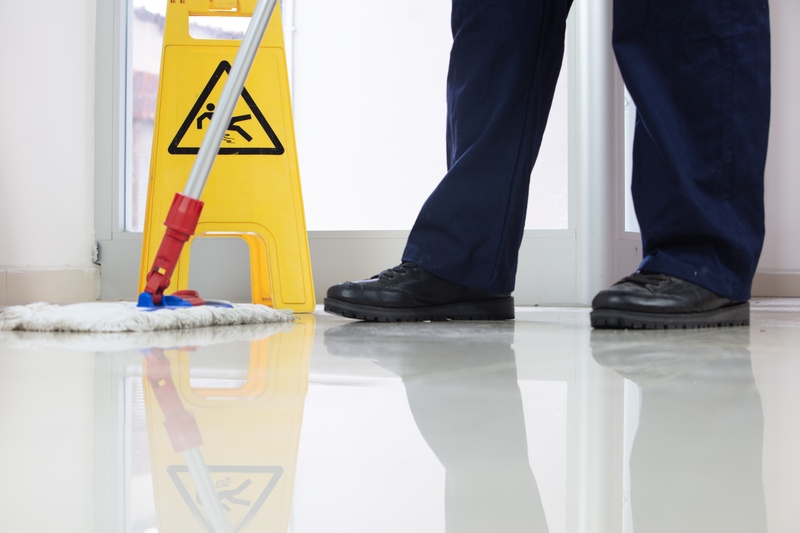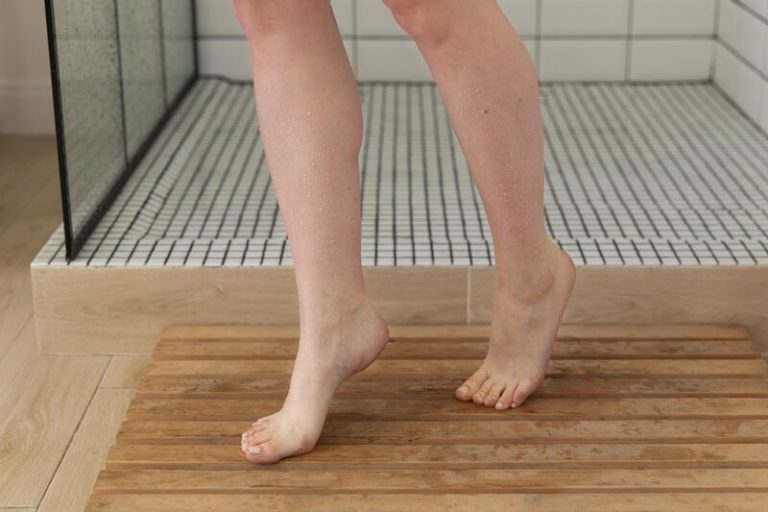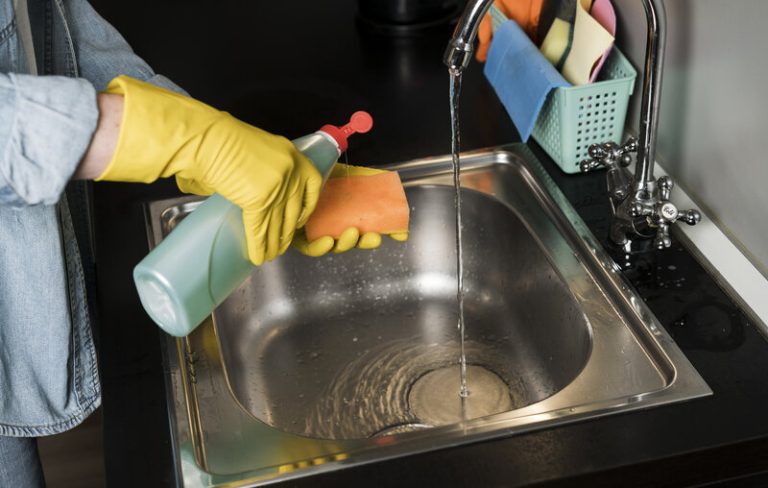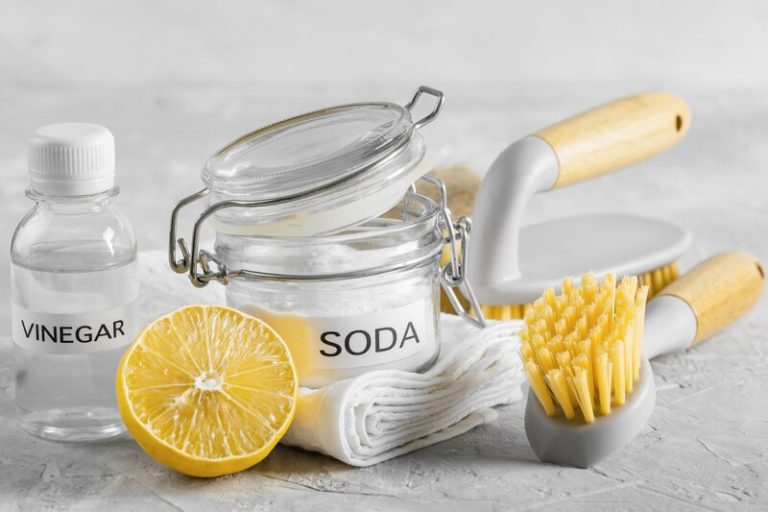Knowing how to clean a wet room floor is crucial for maintaining hygiene and enhancing the overall look of your space. Wet rooms are unique environments that require special attention to keep them free from mould, mildew, and unpleasant odours. With the right tools and techniques, you can ensure your wet room remains a fresh and inviting area.
In this guide, we will explore the essential materials and effective cleaning methods needed for a spotless wet room floor. By following these steps, you’ll not only enhance the room’s aesthetic appeal but also extend the longevity of your flooring.
Additionally, we’ll share valuable tips to help you maintain a clean and healthy environment, preventing future issues and ensuring your wet room looks its best. Let’s dive into the details!
What Materials Do You Need to Clean a Wet Room Floor?
To effectively clean a wet room floor, you’ll need a variety of materials and tools that ensure thorough cleaning and maintenance. Essential cleaning supplies include:
● High-quality cleaner suitable for your tile type
● Microfibre cloth for gentle wiping
● Steam cleaner for deep sanitisation
● Bucket filled with warm water to make rinsing easier
● Mop or rubber-bladed cloth to assist in drying the area efficiently
● Brush to tackle stubborn stains
● Bicarbonate of soda for tough soap residue or stains
How to Prepare for Cleaning a Wet Room Floor?
Preparing to clean a wet room floor involves several important steps that ensure the process is efficient and effective.
First, you should clear the area of any clutter, such as toiletries, towels, and bath mats, so you have a clean slate to work with. Next, it is crucial to ventilate the room properly by turning on the extractor fan or opening windows to prevent moisture build-up during the cleaning process.
This helps reduce the risk of mould and mildew, thus maintaining a hygienic environment. Taking these preparatory measures not only makes cleaning easier but also enhances the longevity of your wet room’s materials.
How to Clean a Wet Room Floor?
Cleaning a wet room floor effectively requires a systematic approach that includes several key steps, ensuring the area is both hygienic and visually appealing, such as:
a. Sweep or Vacuum the Floor
To kick off the cleaning process in your wet room, begin by thoroughly sweeping or vacuuming the floor. This preliminary step is crucial for eliminating loose debris, dust, and hair that could obstruct your cleaning efforts. A vacuum cleaner designed for wet and dry surfaces can be especially effective, as it captures both large and fine particles, ensuring a comprehensive clean.
Remember, preparing the floor adequately is an essential part of how to clean a wet room floor, as it prevents scratches during scrubbing and allows your cleaner to work more effectively on stubborn stains. A consistently tidy space not only looks great but also simplifies future cleaning sessions.
b. Apply Cleaning Solution
Once the floor is cleared of debris, it’s time to apply a suitable cleaning solution that effectively tackles dirt and soap residue. Select a cleaner based on your floor type—be it natural stone, ceramic, or porcelain. An even application of the solution is vital, so take your time and let it sit for a few minutes to penetrate stubborn stains.
Use a brush or mop to scrub gently, paying extra attention to areas that require deeper cleaning. This step is key in mastering how to clean a wet room floor, ensuring a hygienic and visually appealing result. After scrubbing, always rinse the area thoroughly to eliminate any residual cleaner that could attract new dirt.
c. Scrub the Floor
Scrubbing the wet room floor is an indispensable step in the cleaning regimen. This task helps lift embedded dirt, soap scum, and stains from the surface. Opt for soft-bristled brushes or microfibre mops, as these tools safeguard delicate tiles while effectively removing grime. For best results, use a mild cleaning solution designed for wet room surfaces to help break down tough build-up without causing damage.
Regular scrubbing—ideally on a weekly basis—will not only keep your floor looking pristine but also reduce the risk of mould and mildew growth. Mastering this aspect is essential for anyone wanting to know how to clean a wet room floor efficiently and maintain a fresh environment.
d. Rinse the Floor
Rinsing the wet room floor is a critical final step that cannot be overlooked. This process ensures that all remnants of cleaning solutions and dirt are washed away, leaving your bathroom not just looking clean but also hygienic. Use clean water to rinse thoroughly, directing the water towards the drain to minimize standing water. A high-pressure nozzle can enhance water flow, making it easier to dislodge stubborn particles.
By following this step diligently, you not only prevent soap build-up but also maintain a slip-free surface. Effective rinsing is integral to how to clean a wet room floor properly, ensuring that your space remains safe and inviting.
e. Dry the Floor
Drying the wet room floor is essential to prevent watermarks and ensure a slip-free surface immediately after cleaning. Employ techniques such as using a highly absorbent microfibre cloth or a squeegee to effectively remove excess water from the tiles.
Additionally, don’t forget to pay special attention to glass sections by using a sponge with a gentle glass cleaner for a sparkling finish. Ensuring complete dryness is crucial, particularly in areas prone to moisture build-up; lingering water can foster mould growth and compromise both the aesthetics and health of your wet room.
For optimal results in how to clean a wet room floor, implement a routine of drying the floor consistently after each use, which not only enhances the longevity of your flooring but also contributes to a more pleasant environment. Consider ventilating the area with extractor fans or dehumidifiers to further reduce moisture levels, creating a healthier living space.
What Are Some Tips for Cleaning a Wet Room Floor?
To maintain a clean and hygienic wet room floor, several effective tips can help ensure the process is both straightforward and successful, including:
a. Use a Mild Cleaning Solution
When learning how to clean a wet room floor, choosing a mild cleaning solution is paramount. Harsh chemicals can damage tiles, causing discolouration over time. Opt for a gentle cleaner tailored to your specific tile type; this not only effectively removes dirt but also maintains the integrity of your flooring. Natural options, like vinegar mixed with water, work well for ceramic tiles, while pH-balanced products are best for natural stone, ensuring both cleanliness and a healthy bathroom environment..
b. Scrub Gently
Gentle scrubbing is a crucial technique in the cleaning process of a wet room floor. This method effectively lifts stains without harming the tile surfaces. For best results, use soft-bristled brushes or microfibre mops that won’t scratch. Mix a few drops of gentle cleaner into lukewarm water to aid in loosening dirt, and scrub in circular motions for optimal results. By incorporating these practices, you’ll keep your wet room looking pristine while preserving the quality of your tiles over time.
c. Dry the Floor Thoroughly
Thoroughly drying the wet room floor after cleaning is essential to prevent mould and mildew. Use a microfibre cloth or a squeegee to remove any remaining moisture, ensuring your tiles stay dry. This simple practice helps maintain a hygienic environment and protects the appearance of your flooring from watermarks. To enhance drying efficiency, consider using ventilation, such as opening windows or using extractor fans, and placing absorbent mats in high-traffic areas for optimal moisture control.
d. Clean Regularly
Regularly cleaning your wet room floor is vital for hygiene and aesthetics, as it prevents dirt and soap residue build-up. Establishing a consistent cleaning schedule helps keep your space pleasant and reduces the need for intensive scrubbing later. Depending on usage, aim to clean at least once or twice a week, especially in humid conditions to combat mould growth. By adopting this proactive approach, you enhance the longevity of your flooring and create a safer, healthier living environment.
How to Prevent Mould and Mildew on a Wet Room Floor?
Preventing mould and mildew on wet room floors is essential for maintaining the overall cleanliness and aesthetics of the room, as these moulds thrive in damp environments. These preventive measures include:
a. Use a Squeegee After Every Use
Incorporating a squeegee into your cleaning routine is a simple yet effective way to prevent mould and mildew in your wet room. By using a squeegee after each shower, you can efficiently remove excess water from the floor, which helps in maintaining a drier environment.
This proactive measure not only enhances hygiene but also prolongs the life of your tiles. By understanding how to clean a wet room floor effectively, you create a safer, more inviting space while minimising the need for intensive cleaning later.
b. Use a Dehumidifier
Installing a dehumidifier in your wet room is a smart way to combat mould and mildew. This appliance effectively lowers humidity levels, creating an unfriendly environment for fungi. By regularly running a dehumidifier, you can maintain a balanced moisture level, which is crucial for both hygiene and comfort. Understanding how to clean a wet room floor is vital, but combining that knowledge with proper humidity control ensures a healthier space free from moisture-related issues.
c. Apply a Sealant
Applying a high-quality sealant to your wet room tiles is essential for protecting them from moisture and preventing mould. A good sealant forms a barrier against water infiltration, significantly reducing the risk of fungi growth. Reapplying the sealant periodically helps maintain its effectiveness. By knowing how to clean a wet room floor and adding this protective layer, you can enhance hygiene and prolong the lifespan of your tiles, keeping them looking fresh and well-maintained.
d. Fix Any Leaks or Standing Water Issues in Your Wet Room
Addressing leaks and standing water in your wet room is crucial for preventing mould and mildew growth. Regular inspections for leaks and ensuring proper drainage help maintain a dry environment, which is vital for hygiene. By learning how to clean a wet room floor, you can also spot potential leaks early, enabling prompt repairs. This proactive approach not only minimises the risk of mould but also enhances the overall functionality of your wet room, making it a cleaner and safer space.
Now that you understand how to clean a wet room floor, you’re equipped to maintain a hygienic and inviting space effortlessly. Regular cleaning not only elevates the appearance of your wet room but also prevents mould and mildew, creating a healthier environment for you and your family.
However, for a truly deep clean that guarantees sparkling results, why not leave it to the experts? TEKA Cleaning offers exceptional residential cleaning services tailored to your needs. Instead of spending your valuable time scrubbing floors, let our professionals ensure your wet room is pristine and safe.
Call TEKA Cleaning today at 01223 751 544—because your home deserves nothing less than the best! Don’t wait; a cleaner, fresher home is just a phone call away!
Read also:











